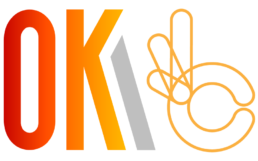Coworking spaces are nothing new, but it took WeWork’s emphasis on design to make shared office spaces cool and disrupt the entire commercial real estate model. And not just design in terms of office decor, architecture and furniture, but design in its true sense. WeWork purposefully designed its spaces to foster a sense of community and shared entrepreneurial zeal. These spaces are where you want to work, rather than just come to work — and it shows.
Just eight years after opening its first space in New York, WeWork is now Manhattan’s second-largest private office tenant. And in 2018, the company is set to grow even faster, opening more than 750,000 square feet of office space in the city — a move that could help the startup overtake JPMorgan Chase as the biggest private office tenant in the borough.
But this pace of growth isn’t isolated to New York alone. Bloomberg reports that WeWork has nearly doubled its reach, expanding from 40 to 73 cities in 2018. Its occupancy rate is also up, going from 73 percent to 82 percent over the course of a year. The same can be said for its memberships, which have reached 220,000. It’s no wonder the company is now touting $342 million in revenue this past quarter.
Thinking by design
Of course, the current emphasis on design didn’t happen in a vacuum. It was at least partially a response to the consumer’s reliance on technology. Smartphones, for one, took the importance of user experience to another level, and savvy companies realized that design-oriented thinking could be applied to businesses as a whole, not simply websites or digital applications. Every customer touchpoint was ripe for design-driven disruption.
Related: Design Thinking Is Not a Process, It’s a Mindset
Soon new startups used design to differentiate themselves in the marketplace, and they did it in entirely new ways. Airbnb, Netflix and Uber are all design-driven companies. So too are more established brands like Apple, BMW and Walt Disney. And what all these companies have in common is an understanding of storytelling. They recognize that stories — the deepest, most enduring ones — are those told through design, not just marketing. And at the heart of the best designs is a powerful creative idea that creates a deep emotional bond between business and customer.
This, then, leads us to the question of the hour: How do you tap into the creativity of design-oriented thinking to grow a startup and compete in the marketplace? Start with the following:
1. Bring agencies in-house.
For many companies, creative challenges are seen as something to outsource to creative agencies. That’s no way to learn. Instead, co-create with these partners by working through the strategies together, prototyping potential solutions and embedding design-oriented thinking as a regular part of your processes.
Related: How Thinking Like a Designer Can Unlock Organic Growth
Craig Dubitsky, founder and CEO of hello, built his $20 million toothpaste brand on a simple idea: Transform an everyday commodity into something desirable. Sure, the toothpaste is more natural than most leading brands; it doesn’t contain dyes, artificial flavors, etc. But in some ways, that’s not the point.
What Dubitsky got right was brand image. He humanized a category that’s long been clinical and unappealing, disrupting the $40 billion oral care industry by giving a personality to something as mundane as toothpaste. You need only look at the packaging to see why hello has become one of the fastest-growing toothpaste brands in the U.S.
2. See design as an input rather than an outcome.
When sitting down with creatives, it isn’t uncommon for executives to come to the table with the challenges they feel need a creative fix. This is shortsighted, and a better option would be to share all your challenges. This provides the opportunity to apply formal design processes to non-design initiatives.
You move beyond just improving the customer experience and start to reshape business models and develop provocative solutions through these creative collaborations. It’s one of the reasons more and more companies are now offering designers and other creative types seats in the boardroom.
Related: 3 Lessons Entrepreneurs Can Learn From Designers
In fact, Adobe and Forrester Consulting found that market-leading companies are 1.5 times more likely to be those with a consciously creative focus. Creativity also seems to improve the work environment, with many creative firms being recognized as some of the best places to work in the U.S. In other words, design can have a holistic impact on business.
3. Showcase creativity regularly.
It’s incredible how many organizations talk about creativity but only in the abstract. When your business immerses itself in design inspiration, your horizons expand, your curiosity grows and you begin to hunger for a creative outlet — so much so that you innovate and disrupt all on your own.
Invite disruptors into your business, and ask them to walk you through the experiences they’ve created. Take a field trip to see firsthand how consumers interact with products and brands. Read design trades, listen to design-focused podcasts and make a habit of spending 30 minutes each week watching creative case studies online.
WeWork hosts the annual Creator Awards, a competition of sorts where entrepreneurs, startups and nonprofits have a chance to win funding. Byte Back, an organization that offers computer training and career preparation to low-income adults, took home the top prize of $360,000 last year. It was among 25 winners whose prizes totaled $1.5 million.
When you embrace design and make it part of your organization, you develop a methodology for problem-solving across all areas of the business — a methodology that’s repeatable again and again.


